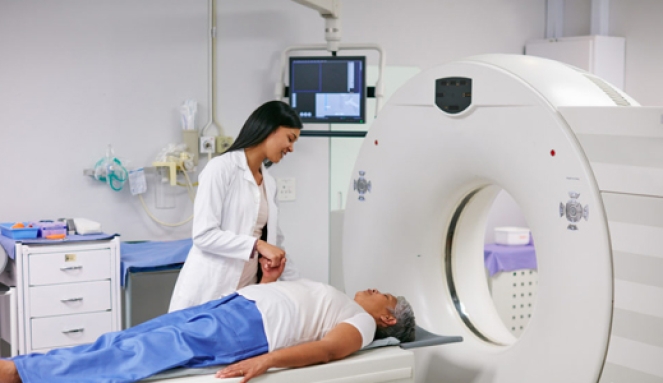Know Before You Go: MRI
The magnetic resonance imaging (MRI) machine is a large piece of medical equipment—intimidating for some, since your body slides inside it. You may not be sure how it works or what it does, only that your healthcare provider wants you to get an MRI study. But there’s no reason to worry. Getting an MRI is a painless process that takes less than an hour in many cases, according to radiologist Bruce Railey, MD, with Medical City Arlington in Arlington, Texas.
The MRI scan is a sophisticated imaging test healthcare providers use to help diagnose medical conditions. “It’s a cross-sectional imaging technique that uses a combination of magnetic fields and radio frequency fields to generate an image,” says Dr. Railey. One MRI test can produce dozens of images—each is called a slice—of the body part being studied.
Who needs an MRI?
Your healthcare provider may send you for an MRI for a variety of
reasons. It’s mostly used to look at soft tissue like muscles and
organs, as opposed to bones, according to Railey. “One of the MRI’s
original applications was the imaging of the brain and spinal cord, and
that is still a very common use,” he says. ”But it has also become very
valuable in imaging of tendons, ligaments, joint cartilage and other
soft tissue. It’s become instrumental in the imaging of the liver
because it’s very sensitive in detecting if a tumor has spread from the
liver to other sites.”
Before you go
Insurance companies may require a preliminary test, such as an X-ray,
before they will cover an MRI. “That’s not uncommon with insurance
companies, but it’s not what a physician would consider a requirement,”
says Railey. “An X-ray may show an abnormality of a bone, but the MRI is
far more sensitive in detecting anything with the muscles, tendons,
ligaments or cartilage.”
You may need to stop
eating and drinking four to six hours before the scan, depending on what
body part is being scanned. For some procedures, especially tumor
imaging, you may need a contrast dye administered intravenously. “The dye can increase the tissue contrast between normal and abnormal areas,” Railey says.
by PATRICK SULLIVAN
















